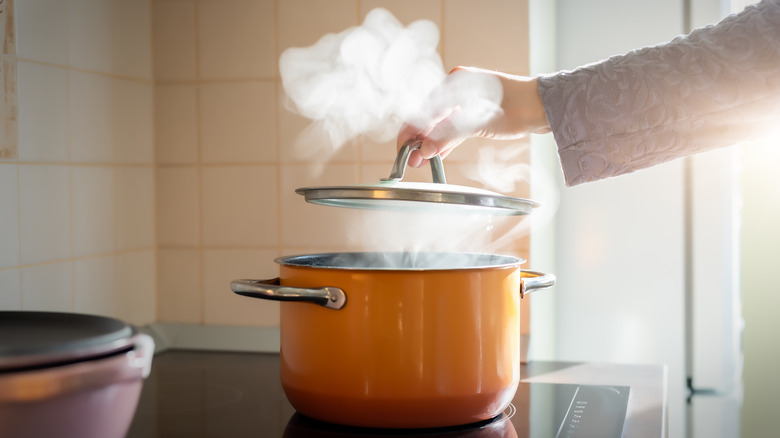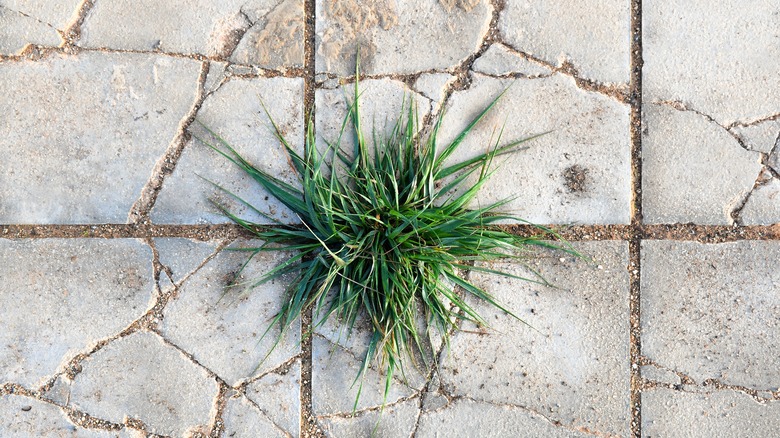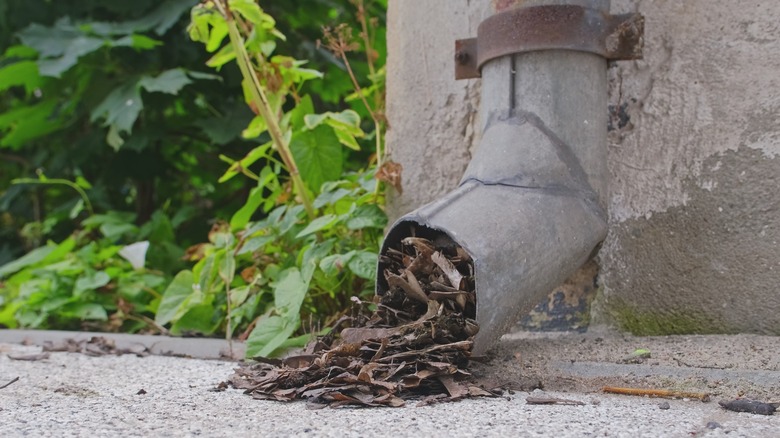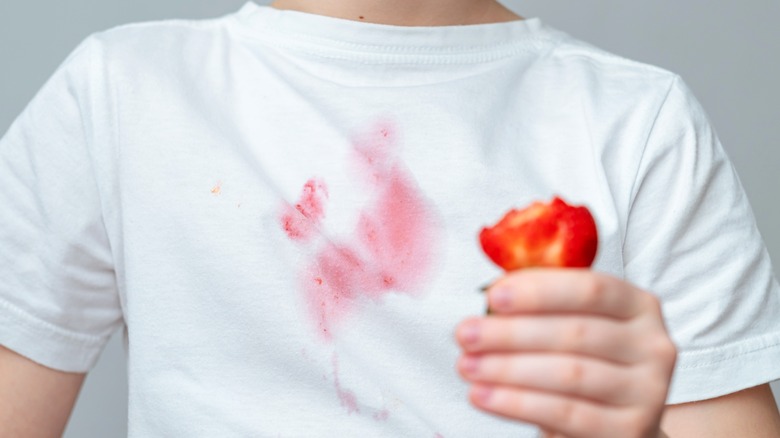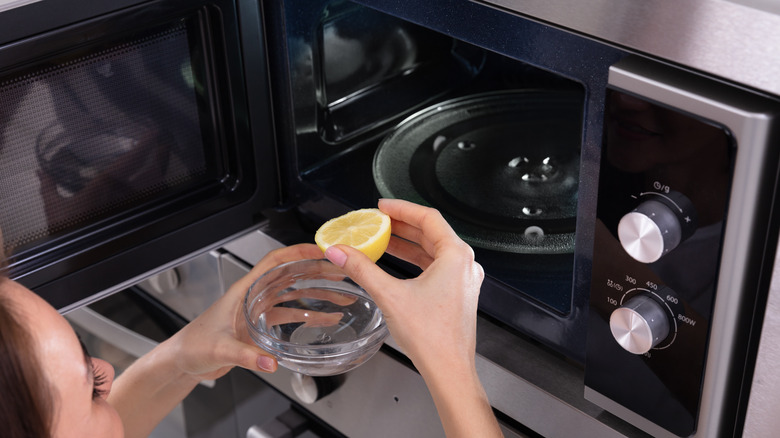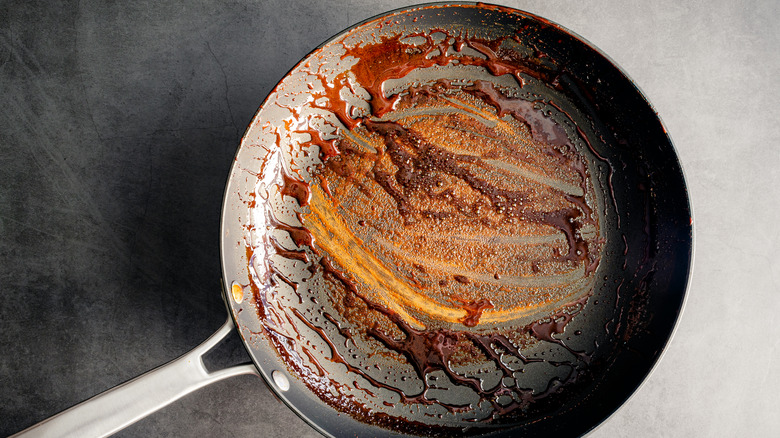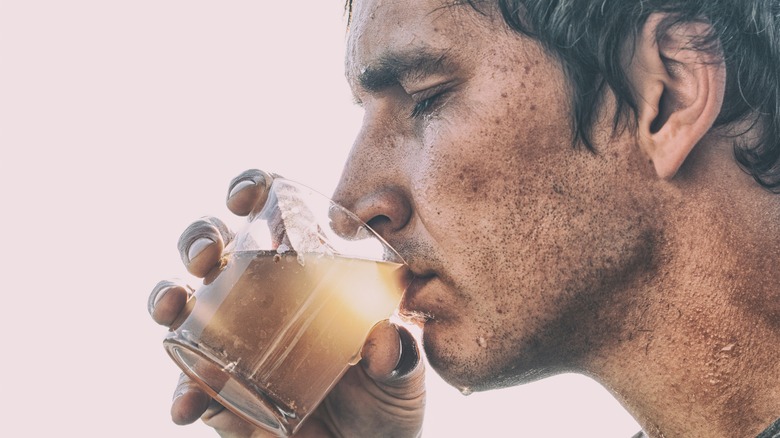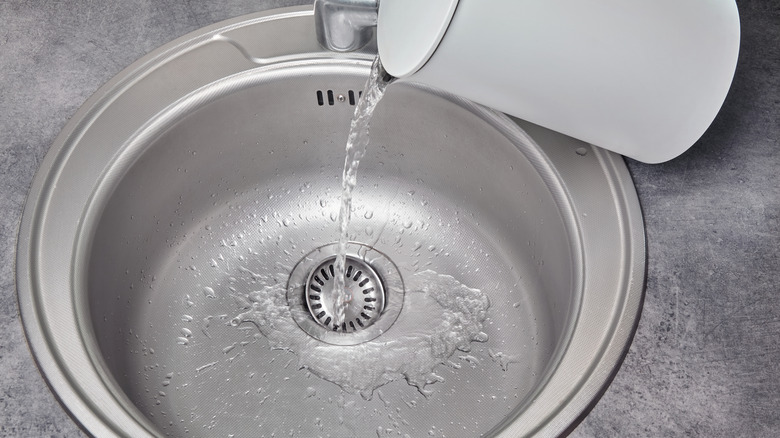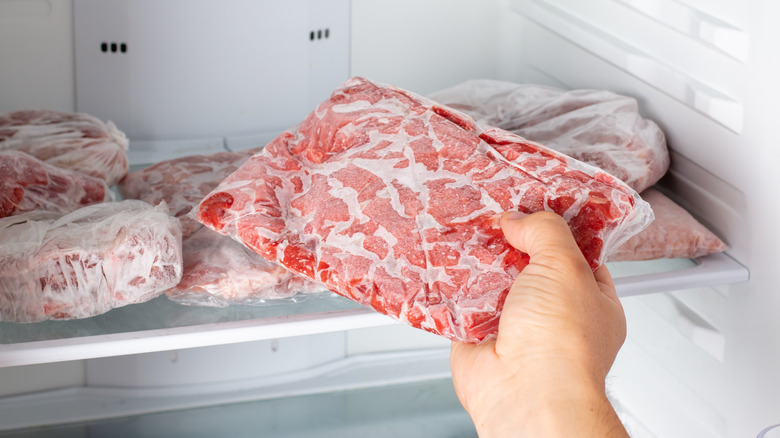6 Ways To Use Boiling Water To Solve Common Household Problems (& 2 To Avoid)
If you're like many, bringing a pot of water to the boil is something that probably happens pretty regularly in your kitchen. You may use it to cook pasta, steam vegetables, or prepare hard-boiled eggs. But did you know that boiling water can also help you solve several common household problems? Believe it or not, boiling water is useful for so much more than just cooking. Piping hot water can actually be used for a variety of cleaning tasks and other household chores.
However, while there are several beneficial ways to use boiling water around the house, there are many tasks that it is not suitable for and where it could actually cause damage or make a problem worse. In the next few sections, we'll examine the ways boiling water can be an asset when completing different jobs around the home. We'll also share some words of caution about ways you should avoid trying to use it.
Use boiling water to kill weeds
If you're looking for non-chemical methods to de-weed your yard, you'll be happy to know that boiling water is one of the least harmful ways to kill weeds. When poured over plants, boiling water works as a contact herbicide. This means that all parts of the weed that are touched by it will die. While this can be effective, there are a few considerations to keep in mind if you want to use boiling water to kill weeds in your yard or garden.
First, as a contact herbicide, boiling water will kill more than just weeds. It will also kill flowers and other neighboring plants. For this reason, you'll need to exercise caution if you're trying to weed a flower bed. Boiling water as a weed-killer is usually best suited for areas where there are no other plants growing, such as in the cracks of a driveway or a strip of pathway paving. Also, note that boiling water will be the most successful when it is used on young weeds and when paired with digging the rest of the weed out of the ground. Its effectiveness will drop as weeds grow and their roots go deeper into the soil. Plan a second treatment about a week or week-and-a-half after the first application to maximize the effectiveness.
Finally, be sure to exercise caution to protect yourself from accidental injury if you're using boiling water to kill weeds. Pour away from your body, and consider wearing long pants to avoid getting burned by any splashes. Pouring the boiling water from a tea kettle or another container with a spout can also help minimize splashing.
Pour boiling water down gutters to clear clogged downspouts
Have you been putting off gutter cleaning? Unfortunately, neglecting to clean gutters can do more harm than you think, and clogged downspouts can spell serious trouble. If water can't exit your gutters properly, it may spill over the edges and damage your home's foundation, cause water to seep into your basement, or even expose interior walls and ceilings to moisture damage. If there is a blockage in your downspout, some boiling water may be able to help clear it out.
Once you notice that water isn't draining as it should, bring a kettle to the boil. Carefully get up on the roof or a tall ladder and pour the boiling water into the gutter right where it meets the downspout. Repeat a few times as necessary, checking the bottom of the downspout each time to see if the blockage was removed. Beyond breaking through the gunk inside the gutter (such as bird or rodent nests and compacted leaves), boiling water is also a disinfectant. It can help remove bacteria or mold that could also be present in your gutters or downspouts.
Try boiling water to lift fruit and berry stains
While cold water is best for many types of stains, such as those from blood, paint, and beverages like coffee and wine, boiling water can effectively remove certain food stains, particularly those left from berries and fruits. However, there is a certain technique that must be used for this approach to be effective. Instead of soaking the stained clothing in hot water or lightly pouring some water over it, you want to pour the boiling water from a height of several inches above the stain.
Think about what happens when you pour water from up high compared to down low. It has a much stronger force and creates a bigger splash. This is what is necessary to remove the stain. When the water molecules bounce more forcefully, they will be better able to break down the fruit stains on your clothing or linen item. Boiling water is the other essential part of the equation. The molecules will be moving much more quickly in boiling water than cold or warm water, adding to their effectiveness in removing the stain.
As with other hacks that use boiling water, exercise caution. Your goal is to get the water to splash and hit the fabric with force, so choose a safe work area and try to stand back from the clothing item. A deep sink or bathtub would be the best option.
Boil water with some lemon in the microwave to remove gunk
In a perfect world, you'd wipe up spills and splatters in the microwave after each use. However, we all know how challenging that can be in reality when you're working on so many different things. Other times, you may not even realize that the bowl of spaghetti sauce you warmed up splattered all over the sides and top of the appliance. Cleaning up old spills and splatters in the microwave can be a real challenge once they've become hardened and caked on.
Fortunately, you can clean your microwave naturally with just a lemon and steam. You'll need some water, a lemon, and a sponge or paper towels. For this trick, you don't need to start with boiling water. You'll let the microwave do the work of bringing the liquid to a boil for you. Add about 1 to 1 ½ cups of water to a microwave-safe bowl. Then, cut a lemon in half and drop the two halves into the bowl. Microwave the water and lemon on high for about five minutes. This will bring the water to a boil. Then, leave the microwave door shut, and let the citrus-infused steam loosen all the gunk.
After 15 minutes or so, open the door, remove the bowl, and simply wipe away all the loosened stains (you might want to wait a few seconds to let everything cool down if it still feels too hot). Using steam is one of the easiest ways to clean your microwave. If there are any stubborn spots, sprinkle a little baking soda over them before scrubbing them with a brush.
Remove burnt messes on pots using boiling water
If you find yourself scrubbing and scrubbing and you still can't make any headway towards cleaning a burnt-on mess on the bottom of a pot or pan, it may be time to see if some boiling water can help. There are actually two different ways that boiling water can assist. The first involves bringing a clean pot of water to a boil and then pouring the water, along with some baking soda and a drop of dish soap, into the burnt pot or pan. Give everything 10 or 15 minutes to soak, allowing the boiling water to loosen the burnt residue. Once the time is up, dump the water out and use a sponge or scrubber to clean the pan.
Another option is to add a cup of baking soda and a cup of salt to the affected pan and then fill it with water. For this approach, you'll want to bring the salty water to a boil over a hot burner. After the water boils, reduce the heat and let it simmer, and gently scrape at the burnt areas with a wooden spoon. The reason both of these approaches can be effective is that the hot water is able to loosen most of the gunk, allowing you to then clean the pot or pan as normal.
Clean contaminated water during emergencies
If your home's water becomes contaminated during an emergency, or you're ever away from home and don't have access to clean and safe water, the Centers for Disease Control recommends boiling water. The high temperature of boiling water is hot enough to kill viruses, parasites, and bacteria that could otherwise make you sick. It is essential to boil water for a minimum of one minute to ensure that harmful germs are killed. If you are at an elevation of 6,500 feet or more, you should boil the water for at least three minutes.
After boiling the water for the recommended time, allow it to cool completely before storing it in sanitized bottles or containers. Boiled water isn't known for its amazing taste. You can improve the flavor by transferring it between different containers and then waiting a few hours before drinking it. A small pinch of salt per quart of water may also make the taste more enjoyable.
Don't try using boiling to clear clogged drains or toilets
While there are handy ways to use it around the home, there are also several things you should never do with boiling water. Clearing a clogged drain or toilet is one of these things, even though you may have heard others recommend it before. In theory, the hot water is supposed to loosen or break up a clog, allowing effluent to flow freely through the pipes again.
Sometimes, this "hack" may work as it is supposed to, but other times the boiling water may not be sufficient to clear the clog. It could even move the source of the clog farther into the pipe, making it more difficult for you, or even an experienced plumber, to clear. Even worse, the hot water could melt or otherwise damage the pipes in your home. PVC pipes — which are used across the country — melt right around the temperature of boiling water (212 degrees Fahrenheit). If you try using boiling water to unclog your toilet, it could also cause the wax ring around the base to melt. A toilet's porcelain bowl could even crack from the shock of the hot water hitting it.
Do not use boiling water to thaw red meat, poultry, or seafood
If dinner needs to get on the table, and you realized that you forgot to take the meat out of the freezer the night before, it can be tempting to submerge it in some boiling water for a quicker thaw. However, as the USDA Food Safety and Inspection Service explains, thawing meat or poultry in boiling (or even just warm or hot) water is not safe. The problem with these methods is that they cause the outer layer of the meat to defrost much more quickly than the frozen core. When this happens, the temperature of the outer layer will fall into something called the danger zone, which is the temperature range between 40 degrees Fahrenheit and 140 degrees Fahrenheit. This range is called the danger zone for a reason. When perishable foods reach these temperatures, bacteria can multiply rapidly, potentially making yourself or others sick.
If you are in a rush and need to thaw meat, poultry, or seafood quickly, the best way is to do so in cold water. This will prevent portions of the meat from thawing a lot faster than the rest, helping the entire item stay at a safe temperature where bacteria will not multiply rapidly. Place the meat or poultry item in a sealed, leak-proof plastic bag or container and submerge it completely under cold water. Replace the water about once every 30 minutes. Thawing meat on the counter is another kitchen habit that you should break, but you can place frozen meat, poultry, or fish in the refrigerator to thaw overnight.
